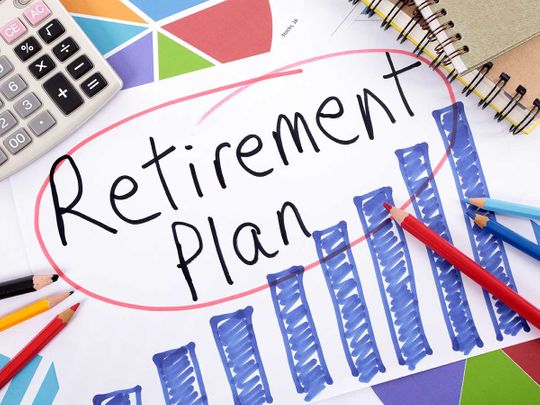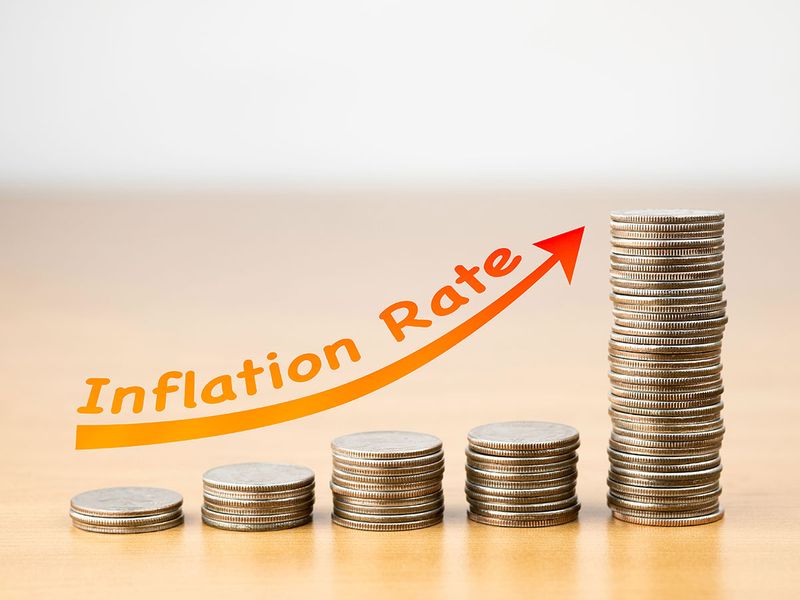
Dubai: Overspending, investing too conservatively and deviating away from your plan – these are some of the most common traps you can fall into on the way to retirement. The good news is that they’re easily avoidable.
Although other risks – like a health crisis or a market downturn – can’t be avoided, but they can be managed. In this article we discuss some of the most common dangers to your retirement strategy and the steps you can take to prepare for them.
By laying some financial groundwork now, you can ensure a smooth transition to retirement. Here are the four biggest financial concerns about retirement, according to a global surveys from US-based personal finance firm Bankrate.com and lender Bank of America’s investment arm Merrill Lynch.
Concern/Risk #1: Managing healthcare expenses during retirement years
Healthcare costs are among the top retirement concerns for those planning to save for retirement. The issues pertaining to this is that neither can a fixed amount be calculated, nor planned in advance for.
According to the surveys, 28 per cent of people are worried their medical expenses will be in too high. But fewer than 15 per cent of those nearing retirement age have estimated how much they will spend on health care in retirement.
Unanticipated medical expenses can derail years of retirement preparation, financial planners note.
Multiple surveys show that at least 70 per cent of people surveyed over 65 will at some point need that sort of care - which can include not just residence in a care facility, but help with daily activities like assistance with household chores. Even without such costs, it’s likely that your health spending will increase as you age.
What to do about it: Some people may be able to pay for long-term care out of pocket or are able to rely on grown children or a relative for assistance. But for many others, long-term-care insurance may be the answer.
If you do choose long-term-care insurance, financial planners suggest you try to purchase it in your fifties – well before you need it. The cost rises as you age and may not be available if you develop certain medical conditions.
If you have a medical condition that's likely to persist when you get older, get a better understanding of what your medications should cost so you can make a more informed comparison among available drug plans.
Also add to your emergency fund to cover unexpected medical expenses. Faced with higher insurance premiums and age-related medical issues, research indicated that people between the ages of 50 and 65 face the highest out-of-pocket healthcare costs of any age group. That's why it's important to have health coverage.

Concern/Risk #2: Problems pertaining to saving enough money for retirement
Today, nearly 25 percent of all 65-year-olds will live to age 90, and almost as many worry that they will outlive their money, according to a Bankrate survey.
Although life expectancies have grown markedly from one generation to the next, it also creates the very real possibility that you might outlive your retirement assets – especially when 37 per cent of people underestimate their own likely life span by five years or more, according to a Merrill study.
A follow-up concern when it comes to saving enough, is not knowing how much of an account balance is required after retiring – given the uncertainty surrounding how long should one be saving for.
What to do about it: You may be able to reduce retirement anxiety by estimating how much you need to save to cover a long retirement. To find out if you’re on track, make use of your bank’s retirement calculator, or one of the many free-to-use ones online.
Then look for ways to boost savings, including taking advantage of adjusting your asset allocation to meet your changing circumstances.
Think about delaying the age at which you claim your retirement saving benefits. By claiming at age 70 as opposed to 62, experts evaluate that your monthly income could go up 76 per cent.
Though you sacrifice income early on, knowing you’ll have higher payouts during your retirement years if you reach your eighties and nineties is like having ‘longevity insurance’.
It is an annuity contract designed to provide to the policyholder payments for life starting at a pre-established future age, e.g., 85, and purchased many years before reaching that age.
Longevity annuities are like ‘reverse life insurance’, meaning a premium (an amount to be paid for a contract of insurance) is collected by the life insurance company by its policy holders to pay income when a policy holder lives a long life, instead of collecting a premium and paying a death claim on a policy holder's short life in ordinary life insurance.
Concern/Risk #3: How market fluctuations poses threat of losses
Even though markets have historically gained over time, they do move up and down. If there’s a significant market drop shortly before or early in your retirement – just as you’re starting to tap into your assets – the value of your investments could shrink to an extent that brings long-term consequences.
Even if the market subsequently improves, if the first four or five years of your retirement are bad, it can be difficult to recover.
What to do about it: Take a second look at the way you invest. As you near retirement, shifting to a more conservative investment approach may help protect against market downturns.
At the same time, it’s important to maintain some exposure to stocks – a portfolio consisting only of cash, deposits and bonds may lose ground to inflation over time. To find a suitable balance, experts advise that a moderately conservative asset allocation may help reduce your risk of outliving your money.
Draw down your assets thoughtfully. Speak with your advisor about developing a withdrawal program that takes into account personal factors such as your age, risk tolerance and liquidity needs.
The percentage of assets you can safely draw down each year – the way you build your retirement paycheck – might change as you age.

Concern/Risk #4: Worries of inflation taking a marked bite out of your savings
Although quite low in recent years, inflation – even a modest percentage – reduces your spending power over time. People in retirement are especially vulnerable.
Over a 10-year period, a relatively low inflation rate of 2 per cent can bring the value of every Dh100,000 saved down to Dh82,035, according to estimates made using an online inflation calculator.
And over a 25-year period—probably a reasonable expectation for the length of your retirement—that number falls to Dh60,953.
What to do about it: Consider investments that could grow along with inflation. That might be real estate or shares of stocks. If you have bond holdings, you may want to consider adding some inflation-linked assets that grow as inflation rises. (add my old story link here)
These government bonds offer returns that vary with the inflation rate. If inflation accelerates for whatever reason, you get compensated for that.
Concern/Risk #4: Retiring with significant amount of pending loans
Global surveys further show that more than 1 in 10 people may worry about having too much debt in retirement. A few years ago the average 65-year-old had more than $48,000 (Dh176,304) in debt, compared to less than $34,000 (Dh124882) a decade earlier. During this time frame, debt increased by about 60 per cent for all borrowers between 50 and 80 years old.
Financial reality looks substantially different for many near and current retirees. Baby boomers (people born from 1946 to 1964) carry an average credit card balance of $6,747 (Dh24,781) and $25,812 (Dh94,807) in total non-mortgage debt, surveys reveal.
By non-mortgage debt, this includes credit cards, store cards, personal loans and other non-mortgage accounts. They have a 3.2 percent default rate for accounts 90 to 180 days past due. Boomer homeowners carry an average mortgage debt of $191,650 (Dh703,930).
What to do about it: Carrying consumer debt into retirement will either reduce the monthly cash flow available to spend on priorities like health care, travel, and leisure activities or will necessitate drawing down retirement accounts faster than planned, creating the possibility of running out of money or facing significant lifestyle changes to make ends meet. And it is hard to get ahead when interest rates on debt outpace earnings on retirement investments.
Financial planners said it is ideal for retirees to have all debt paid off by retirement, but especially “bad debt” such as high interest credit cards. But if one needs to carry any type of debt into retirement, it needs to be reflected in a financial plan that makes room to have enough income in retirement while paying off the amounts owed.
Workers who are rapidly approaching the end of their working years and want to get out of debt but are still saving for retirement may need to work longer, live on less, or make some sort of sacrifice to get the debt paid off before retirement, unless it is possible to safely and securely pay off debt during retirement. Near retirees need to make sure they have enough capital and income so that their money outlives them instead of the other way around.
Planners add that it is best to pay down high-rate debt as fast as possible, however, for low-rate debt such as a mortgage, it is sometimes smarter to pay it down gradually.



_resources1_16a30b358e0_small.jpg)




